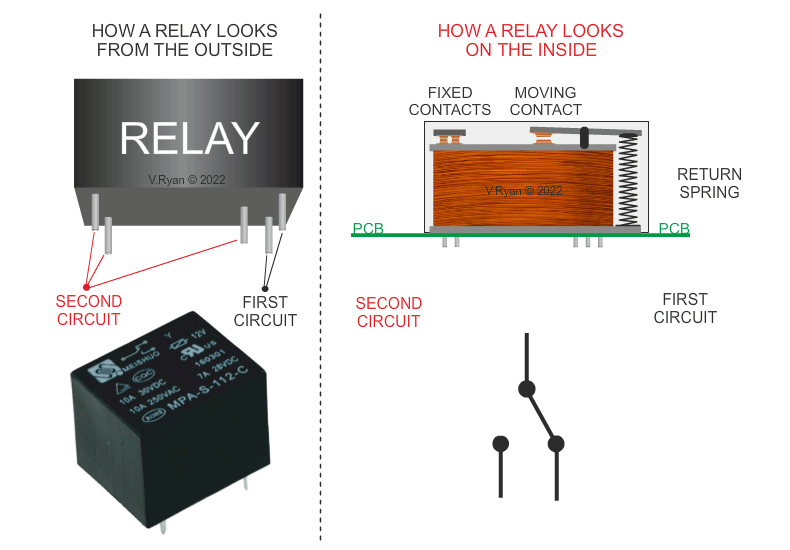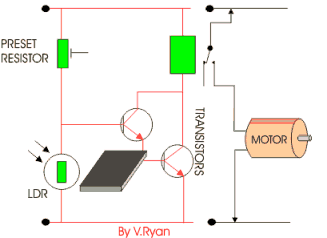| CLICK HERE FOR INDEX PAGE | |
| THE RELAY | |
| V. Ryan © 2002 - 2022 | |
|
PDF FILE - CLICK HERE FOR PRINTABLE WORKSHEET BASED ON EXERCISE BELOW |
|
|
A relay is an electromagnetic switch. In other words it is activated when a current is applied to it. Normally a relay is used in a circuit as a type of switch (as you will see below). There are different types of relays and they operate at different voltages. When you build your circuit you need to consider the voltage that will trigger it. |
|
| RELAY SYMBOLS | |
|
|
|
|
|
|
|
The main part of a relay is the coil at the centre. A
small current flowing through the coil in the relay creates a magnetic field
that pulls one switch contact against or away from another. Putting it
simply, when current is applied to the contacts at one side of the relay the
coil allows the contacts at the other side to work. |
|
|
EXAMPLE CIRCUIT |
|
|
This simple circuit activates the relay only when the LDR is dark (covered). This could be used as part of an automatic animal feeder. For instance, if the animal was fed at night the circuit above would activate the relay. A second circuit, connected to the other side of the relay releases food into a dish. |
|
|
|
|
| The circuit shown below has been simulated using Circuit Wizard software. The transistors (darlington Pair) has been protected by a resistor. As the light level drops the relay is energised, turning on the secondary circuit, allowing the motor to turn, releasinf food into a dish | |
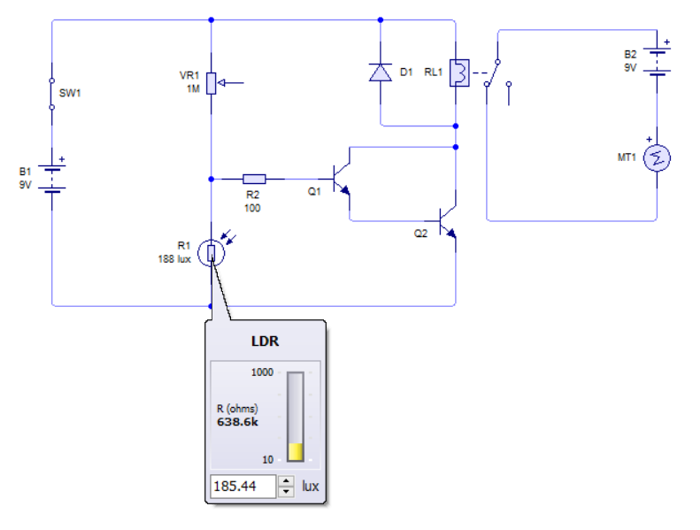 |
|
| PICTORIAL REPRESENTATION OF THE DARK / LIGHT SENSING CIRCUIT (AN ANIMAL FEEDER) | |
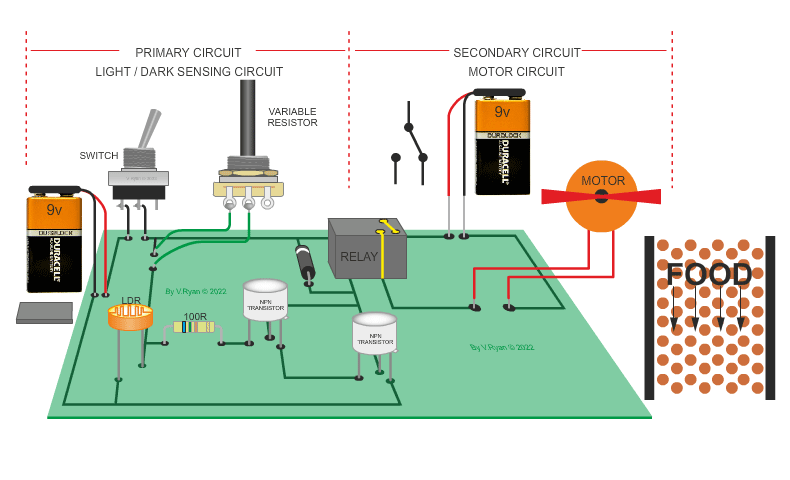 |
|
| USING A DPDT RELAY (Double Pole Double Throw) |
|
| A single pole single throw relay allows the control of one secondary circuit. A double pole double throw relays means potentially a two ‘secondary’ circuits can be controlled. However, using a DPDT relay allows for the rotation of a motor to be clockwise and then reversed to anti-clockwise. | |
| The circuit below shows how a RELAY and LDR can be used to reverse a motor. This may be useful in certain practical applications. For example, If an animal feeder has a lid that opens to reveal food and then closes, after a short time. The lid could be controlled by a motor, which in turn could be controlled by a LDR circuit. | |
| PICTORIAL REPRESENTION OF THE DPDT RELAY CIRCUIT SHOWN ABOVE | |
| The fixed resistor has been replaced with a variable resistor in this circuit. The resistance can be altered, making the sensor more sensitive and allowing for adjustment. | |
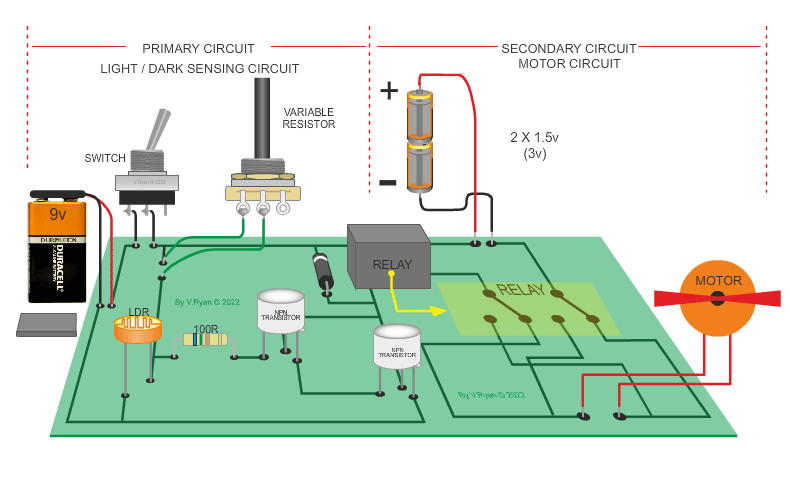 |
|
|
|
|

